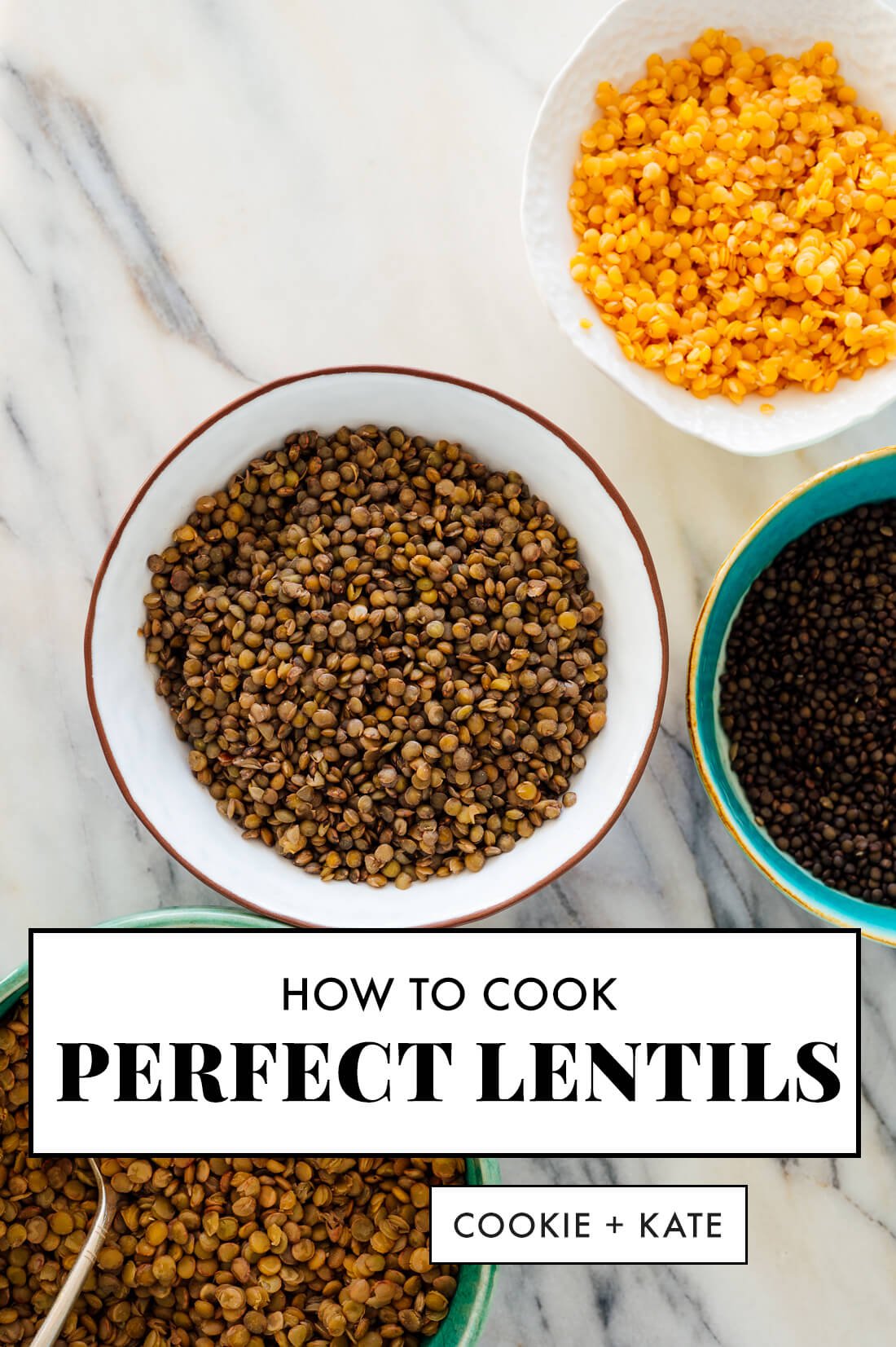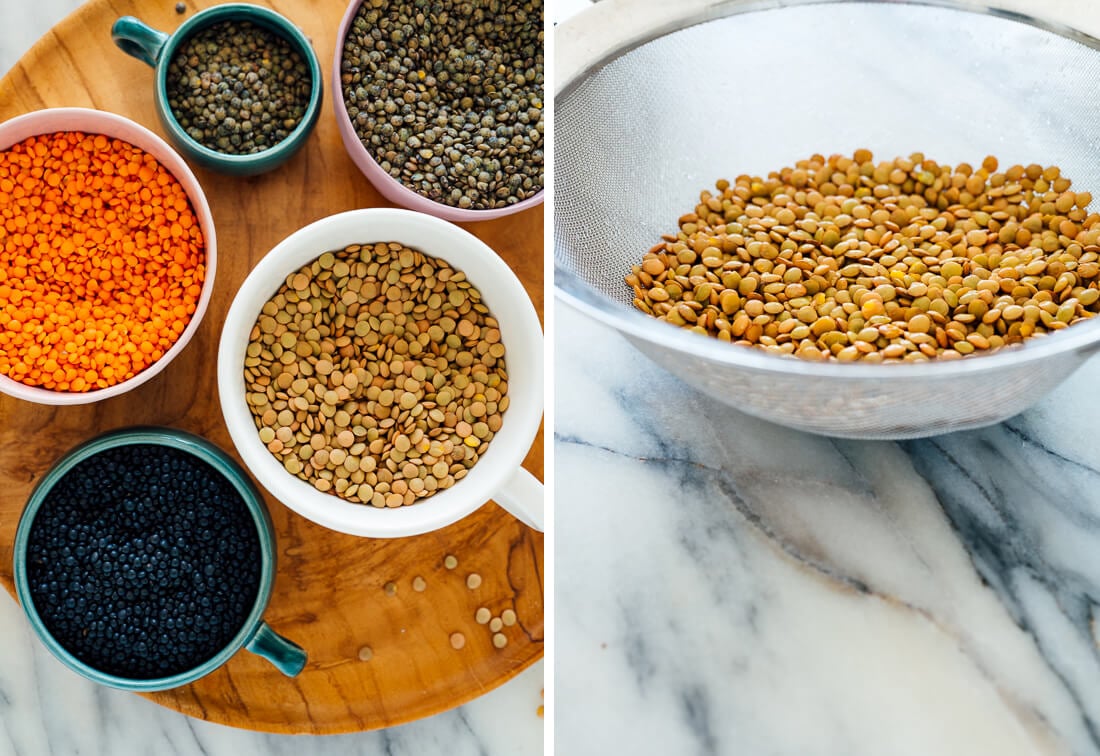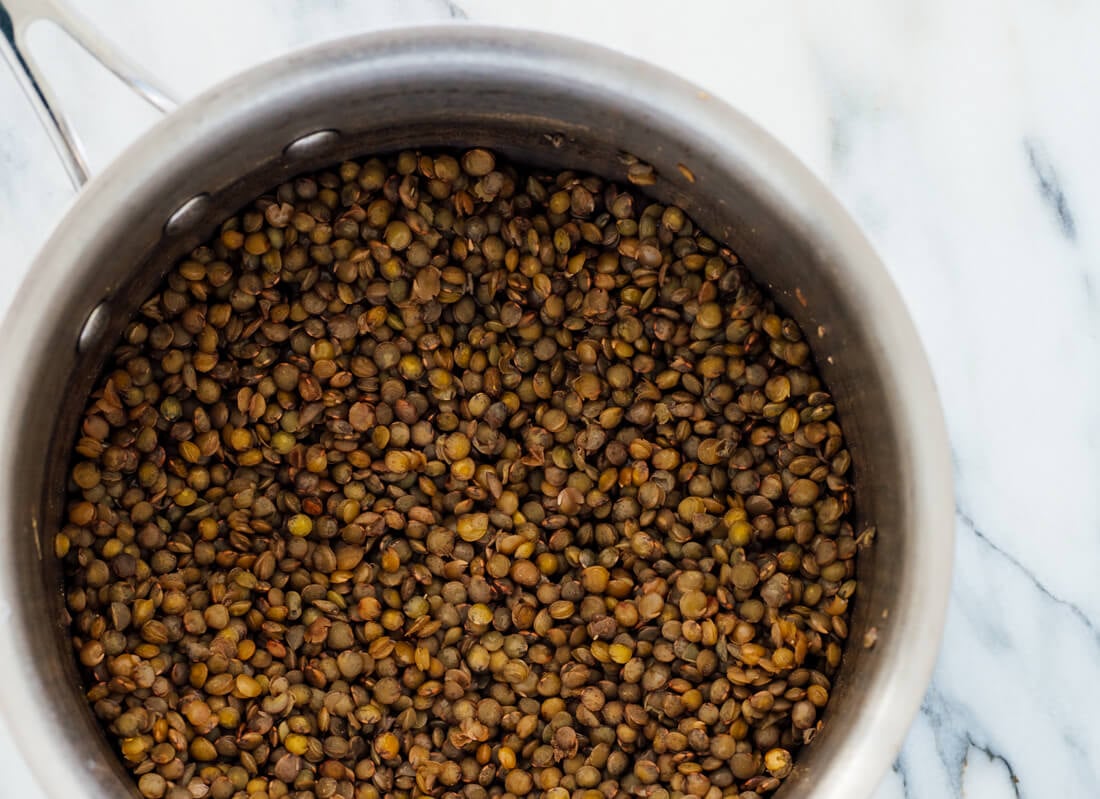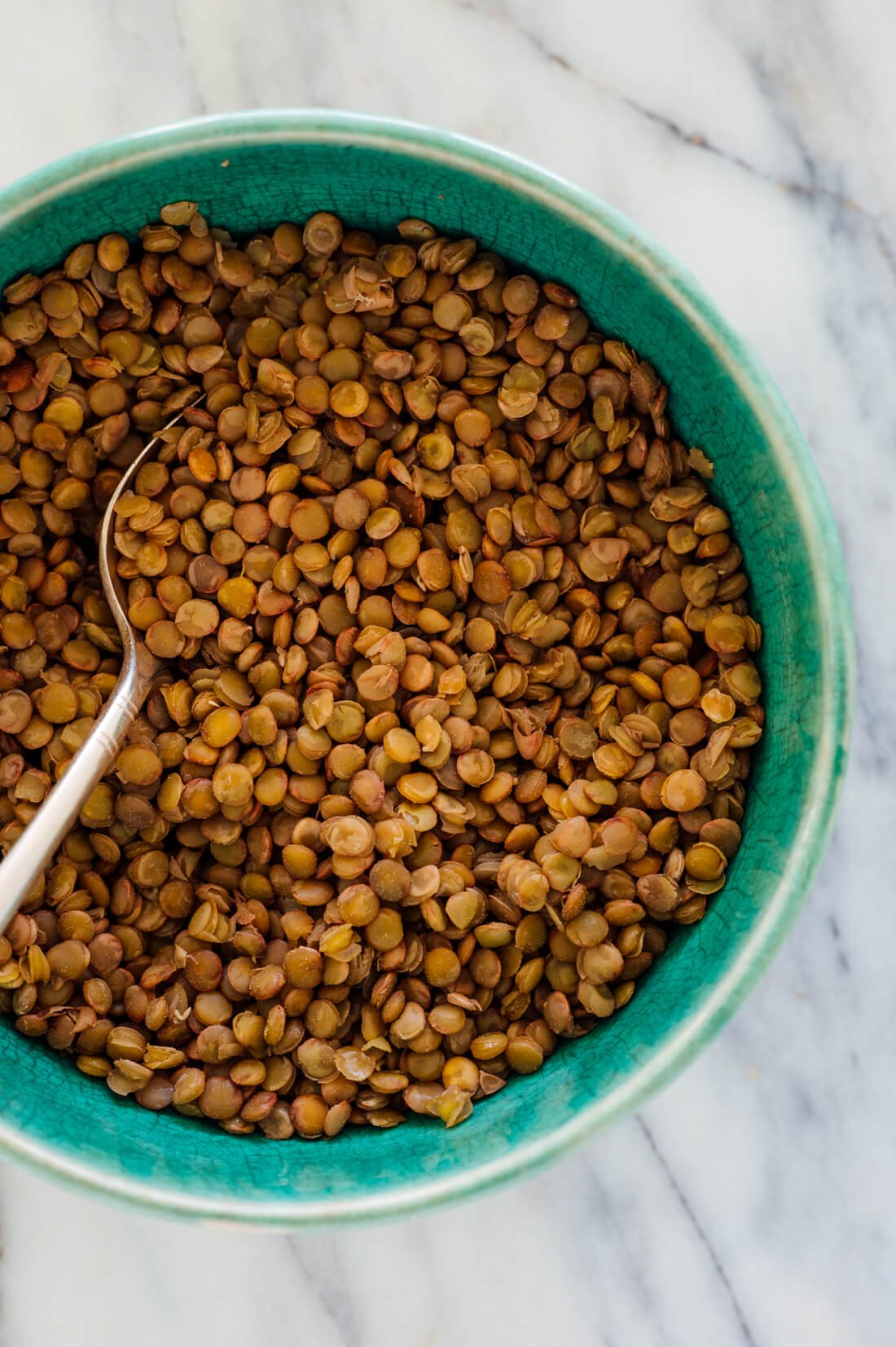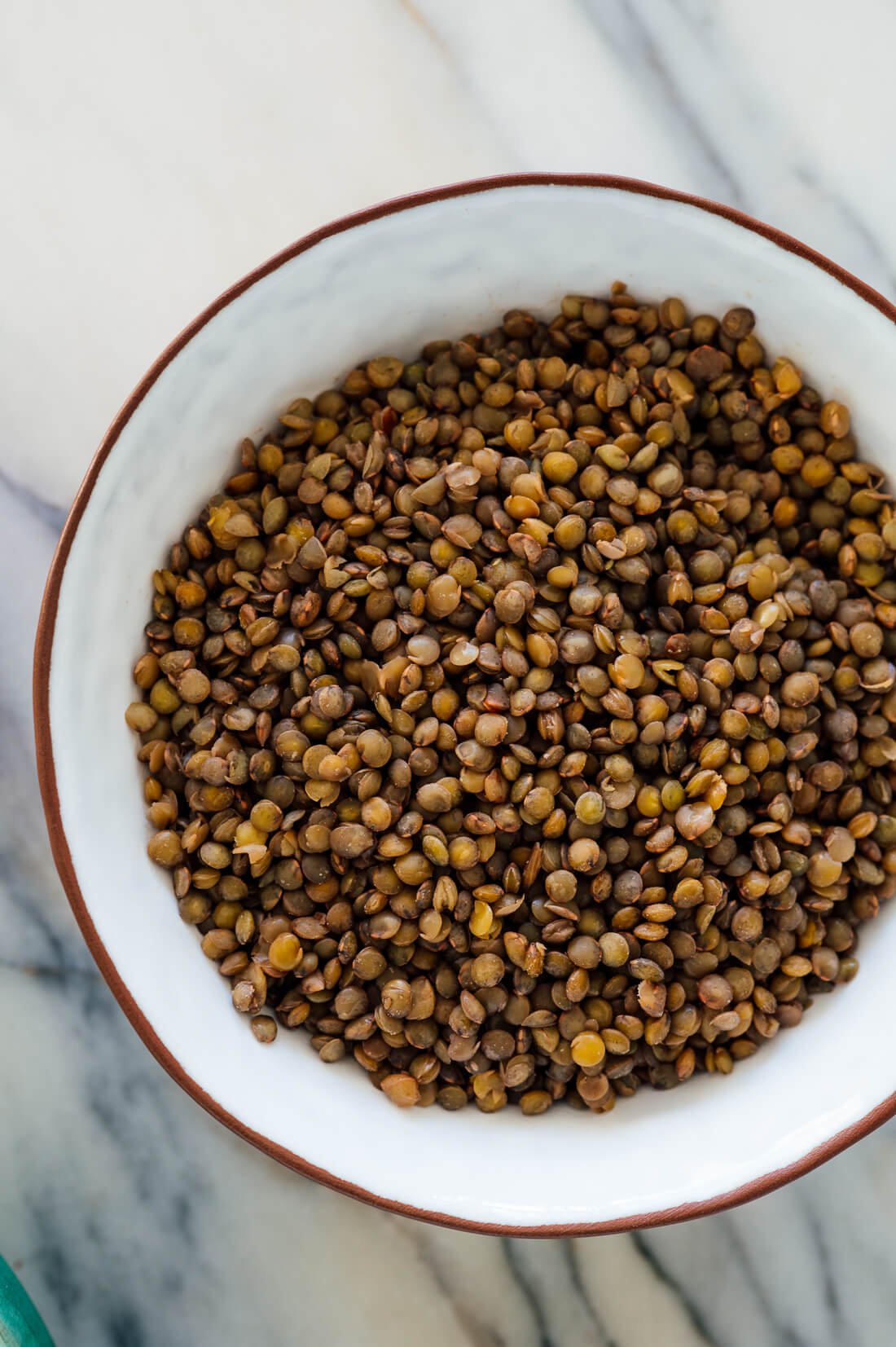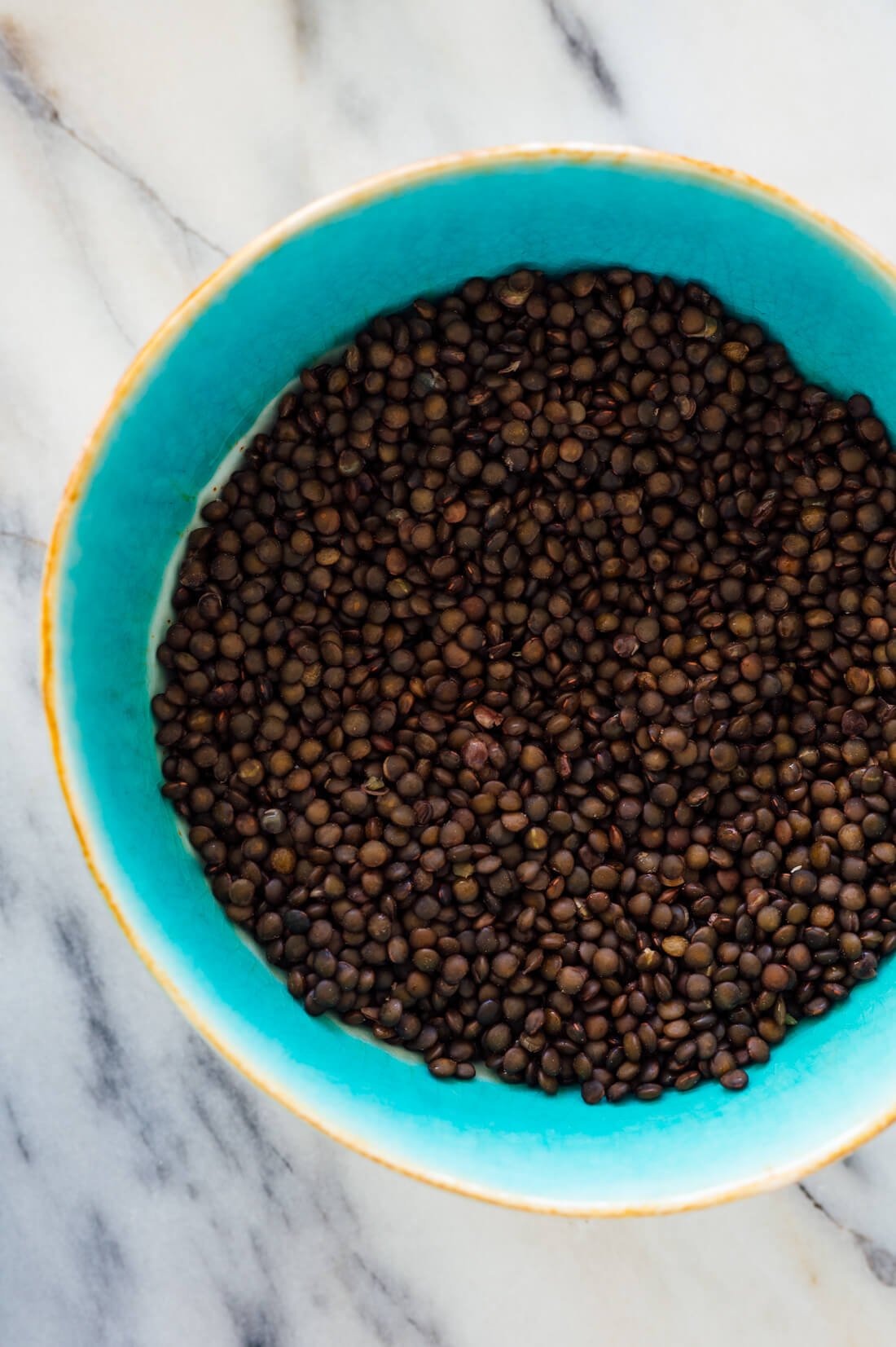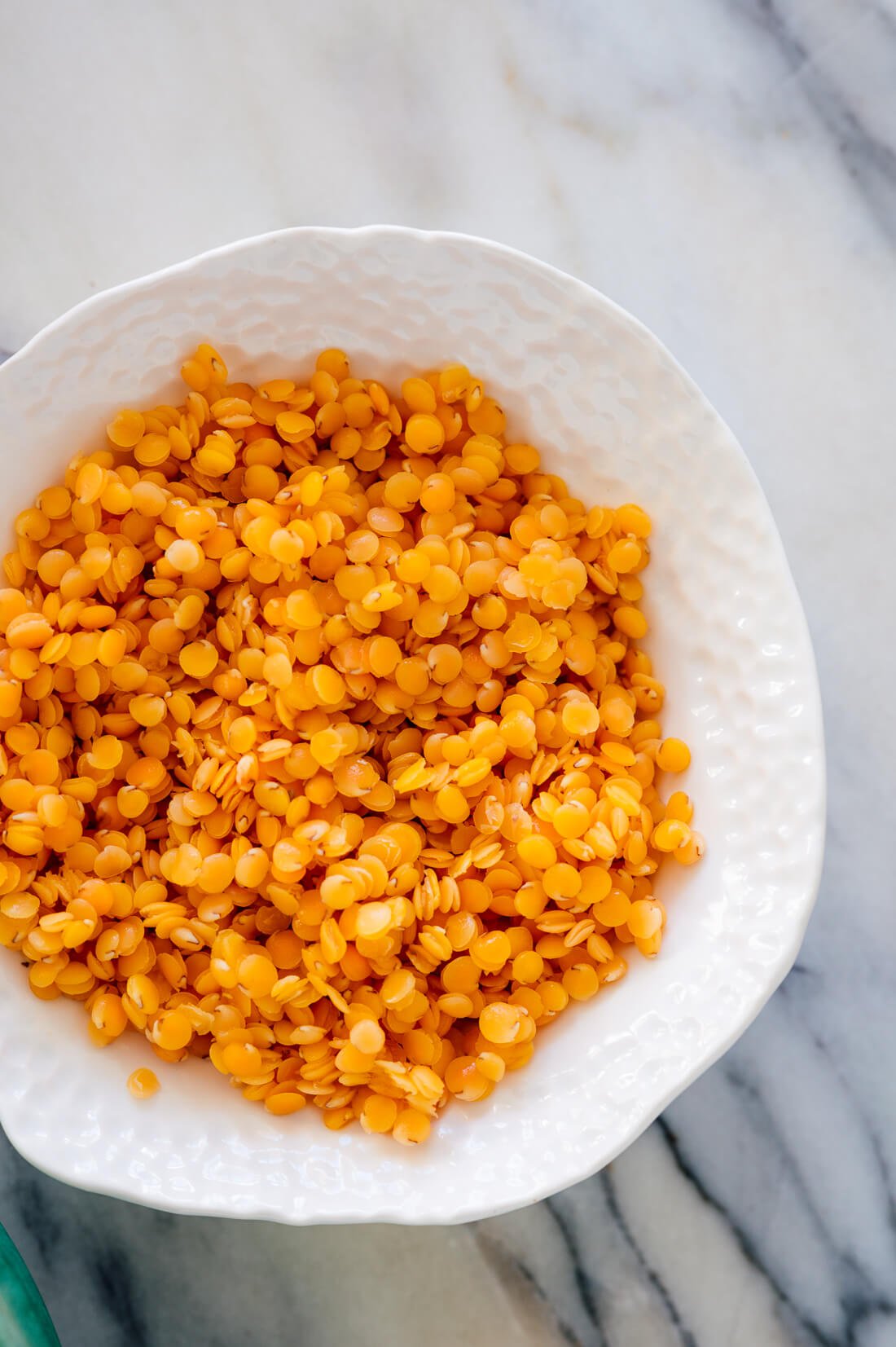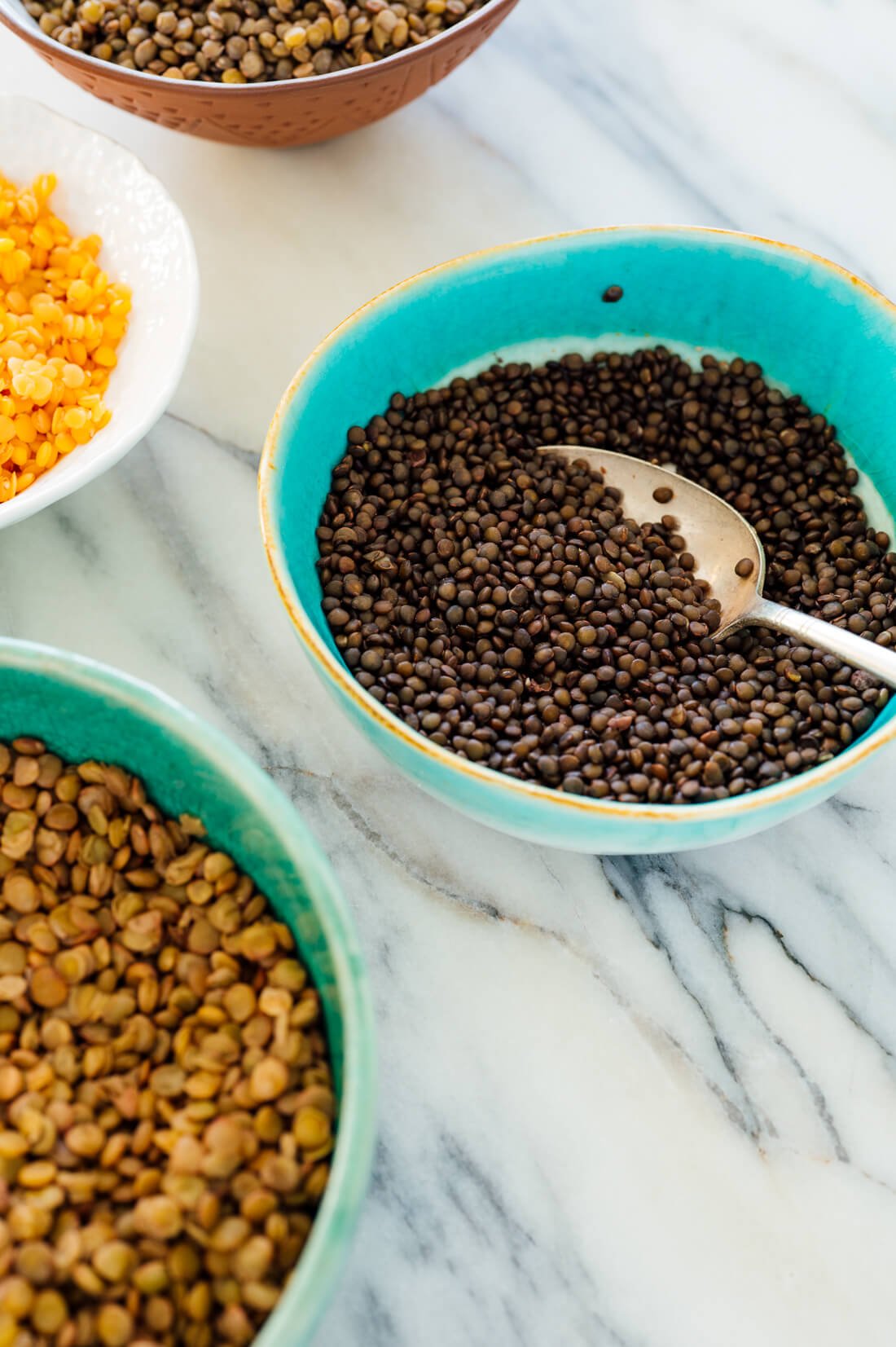I love lentils. They’re highly nutritious, inexpensive, environmentally friendly, and come in a range of colors and textures. All that, and they can be truly delicious—if you know how to cook them properly. This lentil recipe yields perfectly cooked lentils, every time. Lentils are one of my favorite plant-based sources of protein, right up there with their legume cousins, black beans and chickpeas. The beauty of lentils is that they don’t take long to cook (around 20 minutes or so), whereas beans require a couple of hours on the stove. Since I’m generally in a hurry before dinner, their quick cook time is a big selling point.
If you’re trying to eat better, just add more lentils. They’re great in salads, soups (this lentil soup is famous), side dishes, and even with pasta. Lentils continue to soak up nearby flavors as they rest, so they typically make great leftovers. Since I have so many recipes with lentils on the blog, I wanted to share a primer on how to cook lentils. I’ve been tweaking my technique over the years, and I think you’ll appreciate this method. Here we go!
How to Cook Lentils
My technique is a little different than the recipes you’ll find on the back of the packages. It’s quicker, and I hope you’ll agree that it’s even better!
1) Bring a pot of water to boil.
Fill it with plenty of water, but leave room at the top for the water to come to a boil, and some extra space to accommodate the lentils.
2) Meanwhile, sift through your lentils.
You might be wondering—do I really have to do that? Yes, yes, you do. I skipped this step once, and bit right into a small rock. It was jarring, and I’m lucky I didn’t chip my tooth. How to sift through your lentils: Just pour them, very slowly, into a fine-mesh sieve (affiliate link), looking carefully for anything that looks funny. For good measure, sift through with your fingers afterward. Then, rinse your lentils in the sieve to remove any dust.
3) Once the water is boiling, add the lentils.
Reduce the heat as necessary to maintain a lively simmer. No need to cover the pot—I like to keep an eye on them.
4) Add some flavor boosters, if you’d like.
Add some salt, maybe a bay leaf, and maybe a clove of garlic (peeled but left whole). Some recipes will warn you to never add salt to beans or lentils while they’re cooking (they say it’ll prevent them from cooking through), but it’s simply not true! Salt brings out their best.
5) Cook until you reach your desired consistency.
The amount of time your lentils need to cook will vary depending on their variety and their age. I’ve provided some starting points for each variety in the recipe below. You’ll need to test them for doneness when the timer goes off—if they’re not quite done, give them another minute before retesting, or they’re definitely not done, give them a couple of minutes before trying again. Remember, lentils cook quickly.
6) Strain off the excess water.
We’ve cooked our lentils in an abundance of water, so now you’ll want to pour the mixture through your fine-mesh strainer to get rid of the excess. Return your lentils to the pot, this time off the heat, and remove the bay leaf if you added one. If you added a clove of garlic, smash it against the side of the pan and stir it in. Season with another pinch of salt or two, as needed. Your lentils are ready to go!
Watch How to Cook Lentils
Types of Lentils
1) Basic Lentils (Brown/Green Lentils)
Call them basic, standard, brown or green or greenish-brown—we’re talking about the most common lentil (pictured above). This variety of lentil is also the most affordable, and lucky for us, it’s tasty and versatile. These lentils are flatter and a little wider than the two fancy varieties below. You can substitute basic lentils for French green or black beluga lentils if you are careful to cook them until tender. If you overcook them, they can become quite mushy. If you land somewhere safely in between al dente and mush, brown lentils ease right into sauces and soups. You’ll find these lentils in my best lentil soup—they contain enough starch to turn super creamy, especially after blending a portion and pouring it back in. They’re also surprisingly delicious with marinara, as a substitute for ground beef—see my lentil baked ziti and lentil and mushroom “meatballs” as proof. You can even cook this variety with brown rice in the same pot if you follow the instructions in my mujadara recipe. If you’re looking to change up your bean tacos, try substituting lentils, like I did with these roasted cauliflower tacos with creamy chipotle sauce.
2) French Green Lentils (Lentilles du Puy)
French green lentils are smaller and rounder than standard brown lentils. They’re mottled with dark gray and almost look like tiny turtle shells, if you use your imagination. Lentilles du Puy are proprietary to the Auvergne region in central France. They get their nutty, mineral-rich flavor from growing up near mountains and volcanic deposits. Similar green lentils grow in Idaho, and they’re supposedly almost as good. I generally reserve French green lentils for applications that allow the lentil’s distinct shape and texture to shine. In my lentil and couscous stuffed peppers recipe, for example, the round, tender French green lentils contrast with the tiny, fluffy grains of couscous. Like brown lentils, earthy French green lentils are also nice with marinara, as seen in my hearty spaghetti recipe. I use French green lentils and black beluga lentils almost interchangeably in salads, given their similar shapes and textures. You could use French green lentils in my recipes for roasted broccoli, arugula and lentil salad or lentil and chickpea salad with radish and herbs.
3) Black Lentils (Beluga Lentils)
Black lentils could almost pass as caviar (that’s why they’re also called “beluga” lentils). Like black beans, black lentils are actually so dark blue that they appear black. That’s a clue that they’re really good for you—black beans, lentils and blueberries all get their color from powerful antioxidants called anthocyanins. Black lentils are similar to French green lentils in size, shape and texture, but have a more mild flavor. Black lentils are featured in my recipes for Greek lentil salad, lemony roasted broccoli, arugula and lentil salad or lemony lentil and chickpea salad with radish and herbs. The titles gave it away, but black lentils are especially nice with lemon, fresh greens and tender herbs. Black lentils also work well with bold spices and Indian flavors. Check out this masala lentil salad with cumin roasted carrots and my shortcut version of dal makhani, which traditionally calls for whole black lentils (urad dal).
4) Red Lentils (Masoor Dal)
Red lentils, also called pink lentils, are a different ball game. They cook even more quickly because they’ve already had their fibrous skins removed, and they’ve been split open. These lentils turn soft and mushy before you know it, which is why they’re ideal for soups and stews. You’ll find them used in Indian, Middle Eastern and Mediterranean recipes. May the record show that you don’t have to cook them until they’ve completely disintegrated. The recipe below provides cook times to achieve the results you see above. Check out my curried red lentil soup to see how lovely they can be when they’ve been cooked longer. You’ll notice that they turned a more golden color as they cook. You’ll find the recipe to cook any variety of lentils below! Please let me know how this technique works for you in the comments. I’d also love to hear how you enjoy your lentils!

